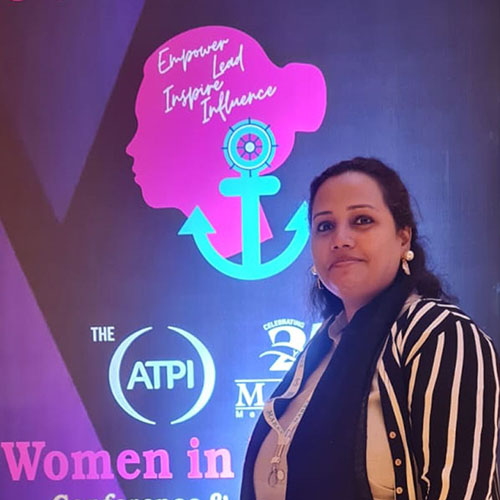
Life has a way of throwing curveballs, and for me, one of the biggest came with a shipbuilding project. It was my first major assignment after losing my dad, and I was still finding my balance. I remember the call from one of my LinkedIn connections—Titagarh Wagons Ltd, now known as TRSL, was looking for a shipbuilding partner.
I joined my team for a meeting, hoping to make a solid impression, but when it was my turn to introduce myself, I completely froze. Instead of introducing the team or talking about our company, my mind went blank. I can still feel the awkward silence. Thankfully, my team stepped in and carried the conversation forward. Despite my slip-up, we somehow secured the project. It felt like a win, but I knew I had a lot to prove, especially to myself.
Execution started, and everyone was excited—this client had been on our wish list for years. But as the weeks passed, I started to notice an


unsettling silence surrounding the project. I went to the project leader, hoping to ease my growing anxiety. He reassured me, “No news is good news, Humera Ma’am,” but that calm didn’t last long.
Two days later, I received an intense call from the Senior Vice President of the client’s side. His frustration with the progress was clear. He demanded answers, and all I could manage to say was, “I don’t have your number, sir,” before the call abruptly ended. It wasn’t a good look, to say the least.
As I dug deeper, I found out the project had run into a few hurdles: the client had yet to issue the Purchase Order, which meant payments were uncertain, but the work had already started. It was a ticking time bomb. Despite these challenges, I decided to keep the team focused on completing the job. I took it upon myself to manage the payment and Purchase Order issues, hoping to keep everything moving forward.
What followed was a series of unexpected challenges:
- Material delays that stretched timelines.
- Constant ship design changes that led to rework.
- Growing dissatisfaction among labor due to frequent design changes.
- High attrition rates as people left due to the stress.
The team was starting to lose faith in me. I was still struggling with personal grief, and they could sense it. I knew I needed to step up, not just for the project, but for them. So, I began documenting every single issue. I shared these insights on LinkedIn, hoping to get some guidance from my network—maybe even some understanding from the client and our leadership.


Slowly, we came up with strategies to regain control:
1. We made sure the project leaders were physically present at the site, full-time. There was no room for distance anymore.
2. Open communication became our mantra. We reached out to everyone involved—procurement, production, quality checks—and kept the dialogue flowing.
3. We took a more hands-on approach with labor issues, ensuring minimal disruption during replacements and addressing grievances directly.
Little by little, things started falling into place. But then came the final challenge: the vessel had to be relocated to a distant shipyard. The
team would have to work around the clock, day and night, to ensure everything was completed on time. It wasn’t an ideal situation, but we stood by them, promising that once it was over, we’d have their backs.
In the end, we managed to deliver the vessel successfully to the client. And when the client delivered it seamlessly to their end customer, I felt an overwhelming sense of pride—pride not just in the work, but in the journey we had been through together.
This project was a turning point for me. It wasn’t just about overcoming technical challenges—it was about resilience, leadership, and the importance of staying true to your team even when things feel impossible. Sometimes, one project really can change your life.
